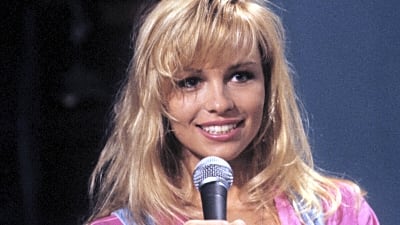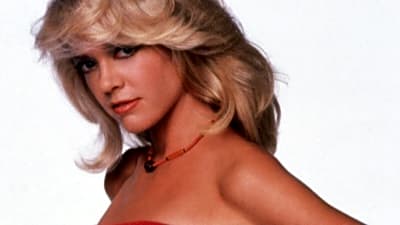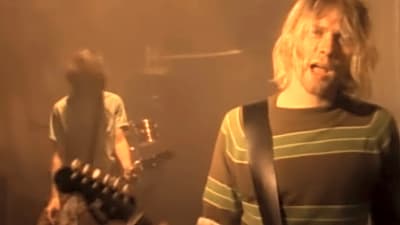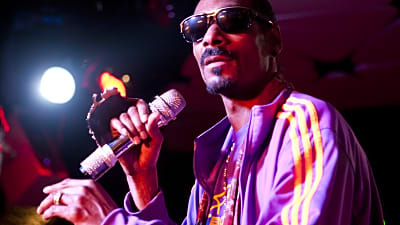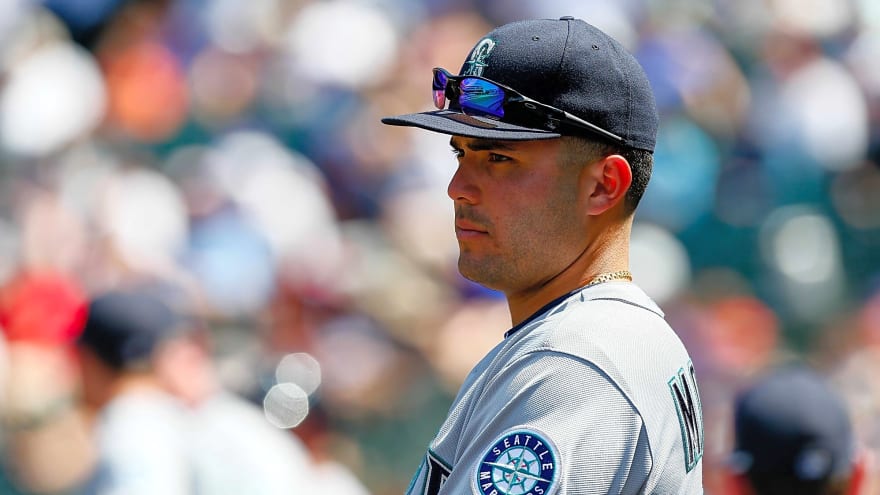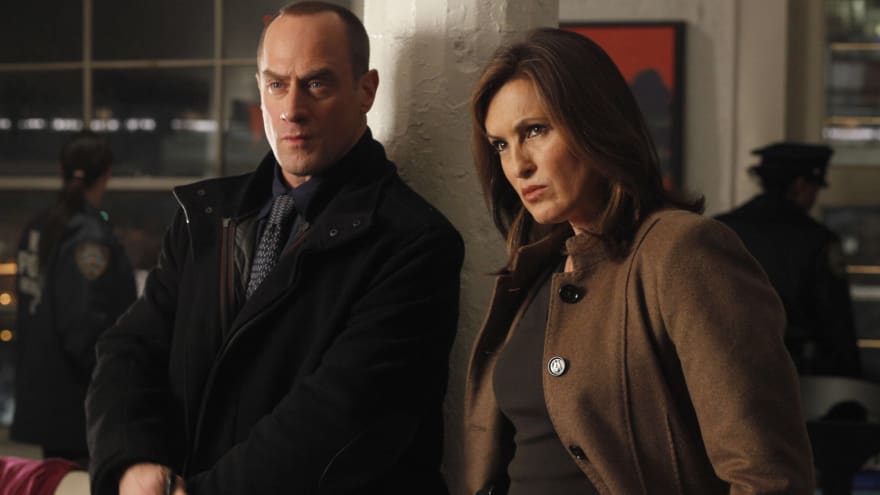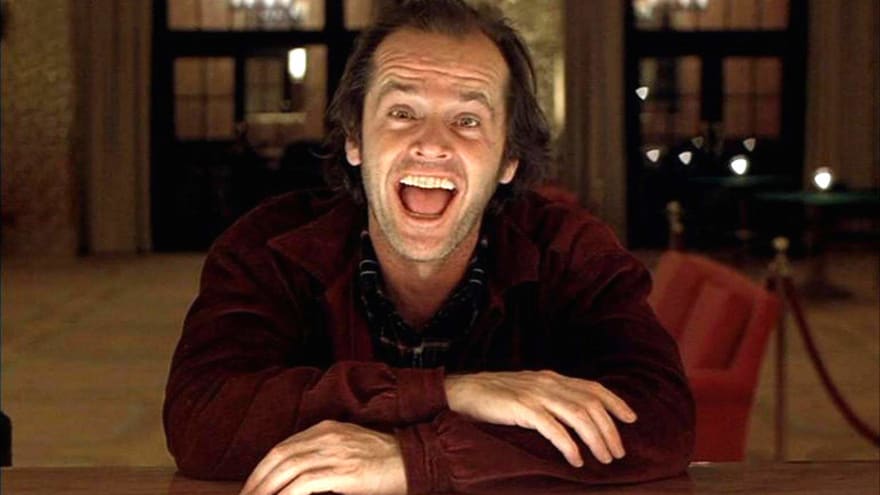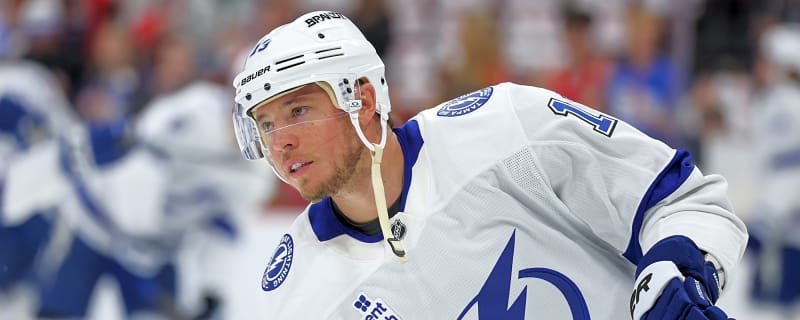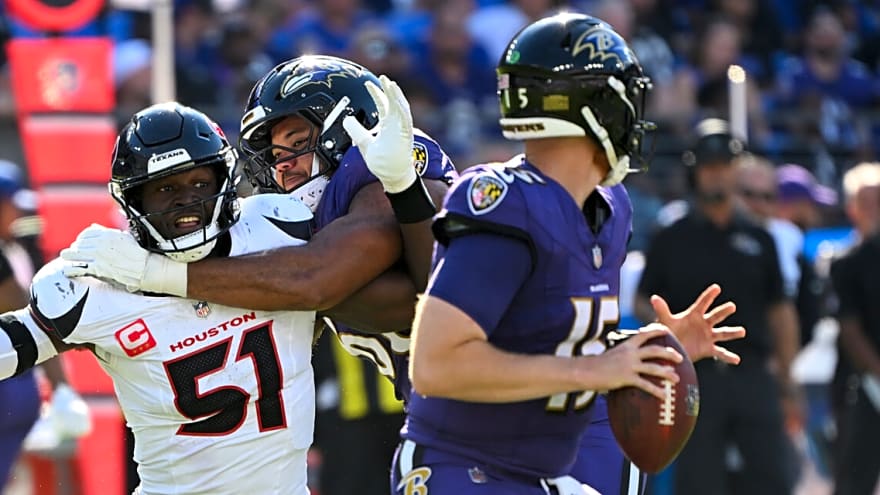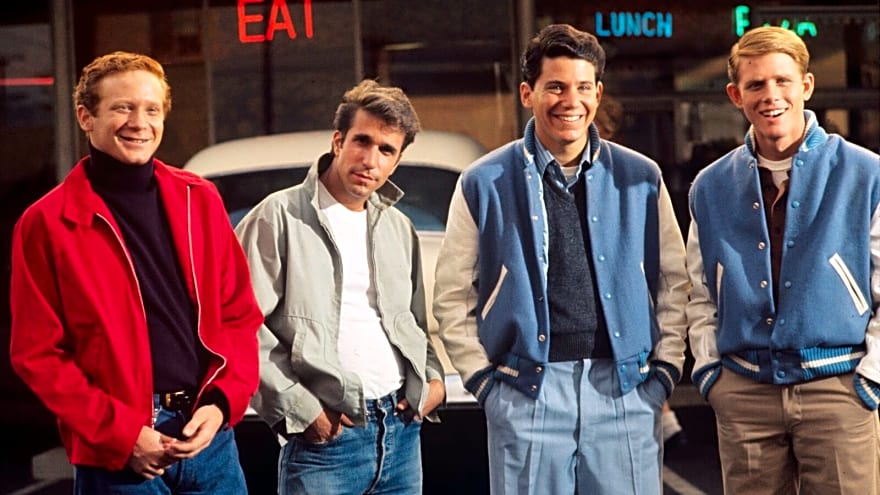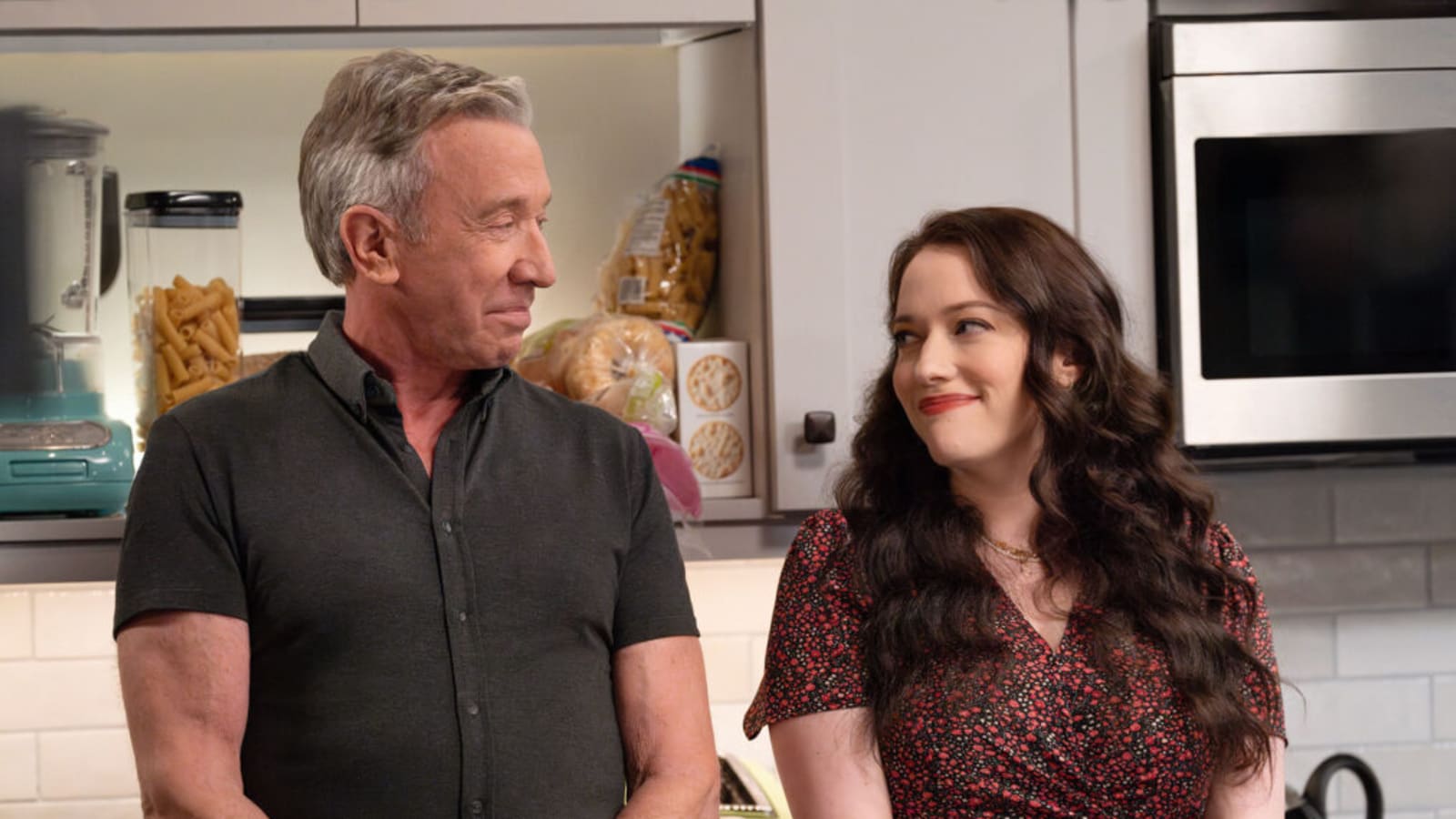
Shifting Gears is “a story about relationships that can be repaired,” sitcom legend Tim Allen says of his return to network TV. “Or restored, as we say,” he clarifies with a knowing smile.
Restoration is at the heart of the new multicamera comedy, in more ways than one. Allen stars as Matt Parker, the owner of a North Hollywood classic car remodeling and restoration shop. Already dealing with the recent passing of his wife, Matt’s world is upended when his estranged daughter Riley (Kat Dennings) comes crashing back into his life.
“She just shows up on his doorstep with her two kids. She’s getting a divorce, and her life is falling apart,” Dennings says. “She has no money and she needs to stay with him. So it turns both their lives upside down.”
“It’s a very relatable story of a family trying to restore itself,” explains showrunner Michelle Nader, who is reuniting with her “muse” Dennings after collaborating on 2 Broke Girls and Dollface.

Disney / Mike Taing
After 15 years apart, that won’t happen overnight. Matt and Riley “have such different styles and completely different beliefs,” Dennings tells TV Guide Magazine. “But what’s fun about them is that she is his daughter, and they are exactly the same. So when they butt heads, it’s just very, very funny.”
Their characters might be at odds, but the actors themselves couldn’t be more grateful for one another. “Kat’s so freaking talented,” Allen gushes. “We’re born on the same day, which is kind of weird. Certainly different ages!”
Dennings shares the sentiment. “Tim’s a really amazing actor, and I’ve told him this to his face, so I’m definitely happy to say it in print!”
The ensemble cast also includes Seann William Scott (of the Lethal Weapon series) as coworker Gabriel, “a guy who grew up with the family,” Scott says, “and has worked at Matt’s car shop since he was 15. He just loves cars and is a weirdo in all the best ways.”
“I’ve been so freaking fortunate,” Allen says of all his costars, who include Daryl Mitchell as Stitch, another member of the car remodeling team. “They all can do their own scenes, whether I like it or not, without me. And it’s just as funny without me in these scenes. Not a good thing for me!”
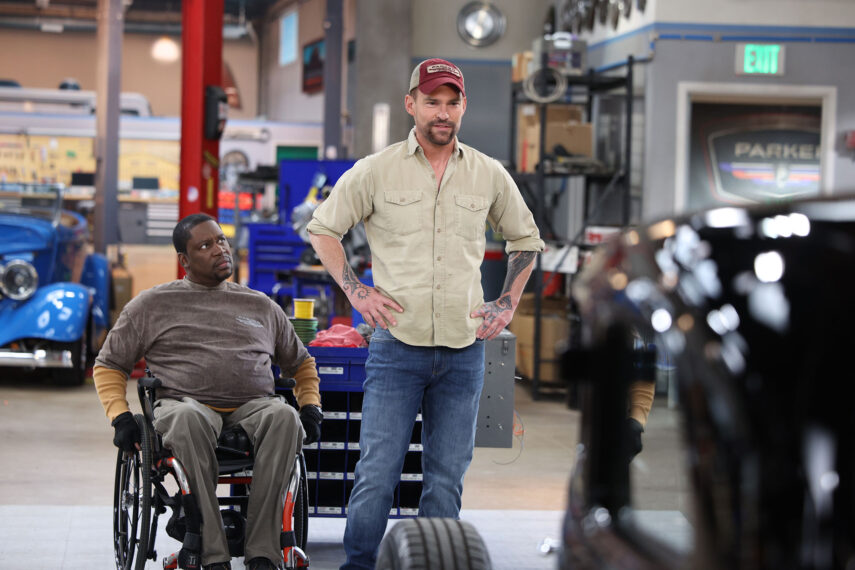
Disney / Raymond Liu
Beyond the theme of the series itself, there’s a broader restoration the series is driving at — that of the multicamera network sitcom, filmed in front of a live studio audience. Streaming may have put the format into neutral for a few years, but Shifting Gears hopes to “restore the classic form and modernize it a little bit,” Nader says. “I think people are really ready for that reinvention.”
The series’ stars are certainly excited to gear-shift back into multicam. “It’s so unlike any other way of making TV or film,” says Dennings, who rose to fame on 2 Broke Girls. “It’s a collaborative, magical, fun experience between the audience and the actors.”
It’s also a new adventure for Scott. “This is my first multicam experience and I’m absolutely loving it — just doing something totally different than anything I’ve done. It’s not often you get to do that and to be challenged in a totally different way.”
“There’s nothing like sitcoms,” agrees Allen. “They seem tired. Until you watch one in person.”
Speaking even briefly to the TV veteran, you get a sense that what keeps him coming back to sitcoms is part of a larger reverence for craftsmanship. It’s no coincidence Allen always plays men who work with their hands. Construction (Home Improvement), the outdoors (Last Man Standing), and auto design are all passions of his. In fact, Allen owns an auto shop in real life, and many of the classic cars featured on the show are ones that he’s restored himself.
“I’ve done a full circle. I look around and I’m on the Disney lot, and I keep walking by the Home Improvement set, which is over that way. I sat in front of the set and they still have a sign on it: Home Improvement. I’m kind of finishing, if you will, where I started.”
Shifting Gears, Series Premiere, Wednesday, January 8, 8/7c, ABC
More must-reads:
- 20 famous sitcom stars who guest starred on a different sitcom
- 20 famous celebrities who are much shorter than they seem
- 20 supermodels who had either film or television roles
- 20 times TV shows accurately predicted the future
- 20 TV characters who vanished with no explanation
Breaking News
Trending in Entertainment
Customize Your Newsletter
 +
+
Get the latest news and rumors, customized to your favorite sports and teams. Emailed daily. Always free!
TODAY'S BEST

‘9-1-1’ star Ryan Guzman reflects on Eddie’s journey leading up to Season 9 in exclusive interview
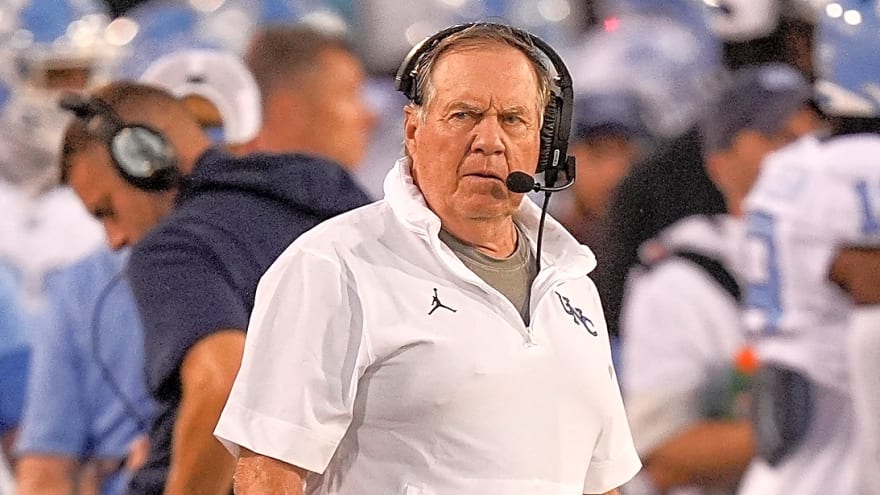
North Carolina reportedly considering nuclear option with Bill Belichick, and that's justified

Steelers' Aaron Rodgers Admits He's Doing Extra Research Ahead Of First AFC North Game
The Pittsburgh Steelers’ 41-year-old quarterback Aaron Rodgers has given the fan base a real reason for optimism so far in the 2025 season. Rodgers has completed 68.5% of his passes for 786 yards and eight touchdowns against just three interceptions. His steady play has helped the Steelers reach a 3-1 record coming out of the bye week, providing hope that the team can compete at a high level this season. Now, Rodgers is gearing up for his first taste of AFC North division play. Known for his meticulous preparation and deep understanding of the game, Rodgers has a profound respect for the league’s history. That respect has him doing extra research ahead of the matchup, making sure he’s ready for the challenges that come with facing hated rivals. Speaking with Steelers insider Brooke Pryor on Wednesday, Rodgers shared his thoughts on the intensity of the AFC North rivalry and what it means to him personally. He emphasized that every division game is an opportunity to prove himself and lead the Steelers to victories that could define the season. Fans are encouraged by his commitment, experience, and the poise he continues to bring to the field. "I was asking PQ [Patrick Queen] about it the other day because he has been on both sides of it," Rodgers said while speaking to the Pittsburgh media on Wednesday. "In my own time in the North and the NFC, I think it was always a great rivalry with Chicago. Minnesota, the states don’t like each other, so there was more blood between the fans, and uh, Detroit, there wasn’t that same type of energy. We wanted to beat them, but there wasn’t like that hatred." Rodgers also recalled some of the intense rivalries he experienced for the majority of his legendary NFL career with the Green Bay Packers in the NFC North. Drawing on that experience, he’s taking extra steps to prepare for the AFC North, including reaching out to Patrick Queen, who joined the Steelers from a division rival ahead of the 2024 season. By learning from teammates who have firsthand knowledge of the division, Rodgers is ensuring he has every advantage heading into the matchup. "It seems like with this, the rivalry is with the Browns and the hatred goes both ways between the Steelers-Bengals and Steelers-Ravens," Rodgers said. It’s clear that Rodgers is genuinely excited for his first taste of divisional football with the Steelers. He has done an excellent job leading the team through the 2025 season so far. Now, with AFC North play on the horizon, it’s a chance for Rodgers to prove to the NFL world that he still has his vintage division-game magic. Steelers' Aaron Rodgers Gives Team A Real Chance In 2025 Many Steelers fans are cautiously optimistic about the team’s 3-1 start, a sentiment shaped by the disappointing finish to the 2024 season. Last year, the Steelers started hot but went on an embarrassing losing streak that derailed their playoff hopes. Now, with Rodgers leading the team, there is hope that his steady leadership and veteran quarterback play can carry the Steelers through the tough stretches of the schedule. It all begins with AFC North play, and Rodgers appears ready to guide his team with the poise and experience that has defined his legendary career. What do you expect to see out of Aaron Rodgers' stat line in his first AFC North contest?

Officiating Crew For Steelers-Browns Game Gives 1 Team Clear Advantage
The Pittsburgh Steelers have been dominant against the Cleveland Browns under Head Coach Mike Tomlin. However, an AFC North contest coming off a bye week is never something Steelers fans overlook. With the Browns sitting at 1-4 and the Steelers at 3-1, a victory in this matchup is pivotal for Pittsburgh to start AFC North play on the right foot. The Steelers are looking to carry momentum from a strong start to the season, and continuing their winning ways against a divisional rival would set a positive tone for the months ahead. The Browns will be starting rookie quarterback Dillon Gabriel, who will be making just his second-ever NFL start. The Steelers' defense will look to make life extremely difficult for the rookie on Sunday. One area that is always important in these matchups is the officiating crew. According to NFL Ref Stats, the Steelers appear to have a significant advantage in this contest against the Browns. Historically, Pittsburgh has fared well under certain officiating crews, particularly those with tendencies that favor defensive schemes and physical play at the line of scrimmage. This statistical edge may not guarantee a win, but it certainly provides a subtle advantage that could tip critical calls in Pittsburgh’s favor during a tightly contested game. Beyond the numbers, the Steelers will need to execute clean football on both sides of the ball. Protecting the quarterback, establishing the run, and maintaining discipline on defense will be key to neutralizing Cleveland’s biggest playmakers. While the Browns are struggling this season, divisional games often bring out unexpected performances, making preparation and focus essential. If Pittsburgh can combine their historical dominance, officiating edge, and disciplined execution, they have a strong chance to assert control early in AFC North play and keep their division hopes alive. Ron Torbert will serve as the officiating head for this contest, and the numbers clearly favor the Steelers. In games Torbert has officiated, Pittsburgh has gone an impressive 10-1, showing a consistent trend of success under his oversight. Even more striking, the Steelers are a perfect 8-0 at home in games where Torbert is the head referee, highlighting a significant home-field advantage when he is on the crew. Steelers Should Have Edge In Week 6 Against Browns Expect the officials to focus heavily on offensive penalties, as Torbert has a reputation for calling more infractions on the offense than the defense. According to NFL Ref Stats, he assesses 52.5% of all penalties against the offense, ranking fourth in the league for offensive penalties per game. This suggests that both teams will need to maintain discipline, but it could particularly benefit Pittsburgh, a team built around physical play and disciplined execution. For the Steelers, this officiating angle could be an advantage they can capitalize on, especially early in the game. By staying sharp and minimizing mistakes, Pittsburgh can force Cleveland into difficult situations while maintaining momentum. With Torbert on the field, the historical trends and penalty tendencies both point to a scenario where the Steelers have an extra edge in controlling the pace and flow of this crucial AFC North matchup. The Steelers sit as -200 favorites in this contest and it seems like a lot is on their side.

Red Wings under pressure to end historic playoff drought
There's no team facing more pressure to win during the 2025-26 season than the Detroit Red Wings. While some can always bring up the perpetual pressure on Edmonton to win a Stanley Cup for Connor McDavid, the expectations on Winnipeg to finally embark on a deep playoff run or even the Pittsburgh needing to win enough to make Sidney Crosby happy, the Red Wings are the ones who have to put an end to their run of futility. Reds Wings are in the middle of a playoff drought Detroit enters the new season looking to avoid a full decade without playoff hockey in a city that labels itself "Hockeytown" and decided to put that iconic phrase back on center ice as part of celebrating the franchise's 100th anniversary season. The 11-time Stanley Cup champion Red Wings currently own the second-longest active postseason drought of nine years, which sits only behind the Buffalo Sabres' 12. And to put Detroit's drought in historical context, this nine-year stretch is the longest any Original 6 organization has ever endured. Simply put, the Red Wings need to stop rebuilding and find a way to get into the playoffs. After just missing out two years ago, many expected last season to be the year. But it was not to be, as Detroit fell out of contention far sooner and crawled to a 39-35-8 record, which was only good enough for 86 points, a five-point drop off from the 91 they posted for the 2023-24 campaign. Red Wings GM Steve Yzerman made a big move to help get back on track Maybe feeling the hunger of the fans, team vice president and general manager Steve Yzerman pulled the trigger on a move that could be the missing piece to get the Red Wings over the hump and at least play further into the spring. Yzerman sent backup Petr Mrazek, a 2026 second-round pick and a 2027 fourth-round pick to Anaheim for veteran goalie John Gibson. It's a package the Red Wings will be more than happy to part with if Gibson can be that steady force the Red Wings have been looking for in net. The move signaled a change in mentality for the Red Wing legend, who has been very patient, maybe too patient, since taking over for Ken Holland in 2019. Before the trade for Gibson, Yzerman was hesitant to go all in, something that became most evident by failing to add anything of note at the trade deadline in either of the past two seasons. But now with Patrick Kane back in the fold for another year, Dylan Larkin still carrying the torch as captain and Lucas Raymond fresh off the best season of his career — he scored 27 goals and totaled 80 points, the Detroit fan is sick of waiting around for next year, and undesirably so at this point. Once the stars of their most recent Stanley Cup teams aged out, a rebuilding period was expected and even necessary, but it's time for the next step in that process is a return to the playoffs. Only then can fans dream of the success the Red Wings once enjoyed back when Yzerman was a player. The pressure will officially begin to mount on Thursday when the Red Wings drop the puck on the new season at home against Montreal.

LeBron James & Steve Nash Send Strong Message to Adam Silver Over Long-Standing Kawhi Leonard Issue
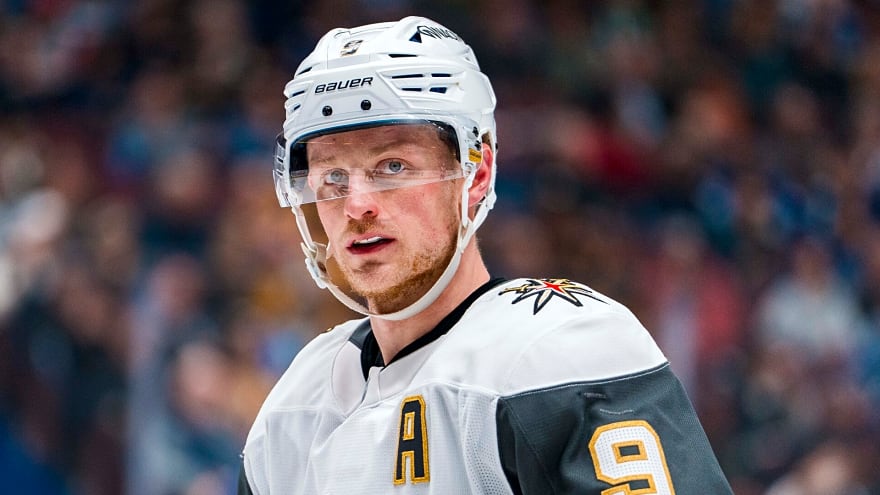
Golden Knights to sign star center to eight-year extension
The Vegas Golden Knights are expected to sign star center Jack Eichel to an eight-year, $108M contract extension, per the Vegas Review-Journal’s Danny Webster. The move was first reported by TSN’s Darren Dreger. Weber adds that the deal is believed to carry a $13.5M cap hit. On a day when the Winnipeg Jets extended star winger Kyle Connor, the Golden Knights have still found a way to steal the show. Eichel’s extension was long anticipated, both for his impact on the Golden Knights’ roster and the intricacies of how Vegas would fit the deal in alongside the $12M cap hit of Mitch Marner. That question has now been answered, with Vegas locking up the tandem through the next eight seasons for $25.5M each season. Landing a max-term extension with Eichel before he has a chance to play alongside 100-point scorer Marner could prove lucrative for the Golden Knights. Eichel had a career year last season, setting career-highs with 94 points and a plus-32 in 77 games. It was a major leap over the 31 goals and 68 points that Eichel managed in 63 games of the 2023-24 season — and the 66 points he scored in 67 games of the 2022-23 campaign. It seems the top center simply needed to ease into his starring role in Vegas after going through a true saga with the Buffalo Sabres. Buffalo drafted Eichel second overall in 2015, properly dubbing him second-fiddle to Connor McDavid’s historic draft season. Despite that seat, Eichel boasted plenty of reason for excitement in his own right and seemed to single-handedly will Boston University to a National Championship loss in his draft year. He brought that team-leading drive straight into the NHL, marked by 24 goals and 56 points in 81 games of the 2015-16 season. That remains the most a Sabres rookie has scored since the 1980s. Even better, Eichel matched it in fewer games of his sophomore season, with 24 goals and 57 points in 61 games. But that quickly became Eichel’s M.O. He was oft-injured, but proved to be the undeniable star of Buffalo’s lineup when healthy. He reached at least 25 goals in each of his next three seasons in Buffalo, and even showed his strength with 82 points in 77 games of the 2018-19 season, when the Sabres collectively only won 33 games. The tension between a struggling club and its productive star reached a peak as the 2020s rolled around — and a breaking point when the two sides couldn’t agree on how Eichel should handle an unprecedented shoulder surgery in 2021. Sabres traded Jack Eichel to Golden Knights in 2021 After multiple bouts back and forth and a seemingly endless run of trade rumors, Buffalo decided to trade Eichel to Vegas in November 2021. In return, the Sabres received Alex Tuch, Peyton Krebs, the draft pick used on Noah Ostlund (2022: 1-16) and a second-round pick traded to Minnesota. All three players remain with Buffalo. Meanwhile, Eichel quickly received the surgery he had preferred upon arriving in Vegas. His 2021-22 campaign was limited to 34 games due to injury, but he recovered in time for the 2022-23 season. Routine injury still marred his year, but he stayed healthy long enough to lead Vegas on a run to the Stanley Cup in 2023. He led the Golden Knights and the postseason in scoring with a dazzling 26 points in 22 games — though the Conn Smythe trophy would go to his goal-scoring teammate Jonathan Marchessault. Regardless, Eichel’s push towards a Cup win showed the Golden Knights, and the hockey world, that he had the grit to be the star center on an NHL champion. He has reaffirmed that thought with 17 points in 18 playoff games since Vegas lifted the Cup. Extension should give Jack Eichel confidence boost With this move, Vegas will place a strong bet on Eichel’s ability to hang onto that role through his 30s. More importantly, they’ll give him a big boost of confidence as he heads into his age-29 season. Eichel has never played alongside a 100-point scorer, nor broken that ceiling himself, but he’ll get his first chance this season. Like Eichel, Marner struggled to crack the century mark for multiple seasons, recording at least 85 points three times between 2021 and 2024. He even reached 99 points in 2022-23. But it wasn’t until last season, when he scored 27 goals and 102 points in 81 games, that Marner was finally able to achieve the feat. In a rare shift, he has now changed teams following a career year and will look to keep the good times rolling on a recent Cup winner. The top of Vegas’ offense is truly a stacked group, featuring Mark Stone, Tomas Hertl, William Karlsson, Pavel Dorofeyev and Ivan Barbashev to support Eichel and Marner. The heights of the lineup seem hard to place, and if all goes well, Vegas has ensured they can keep the band together with a pair of long-term extensions for their two stars.
